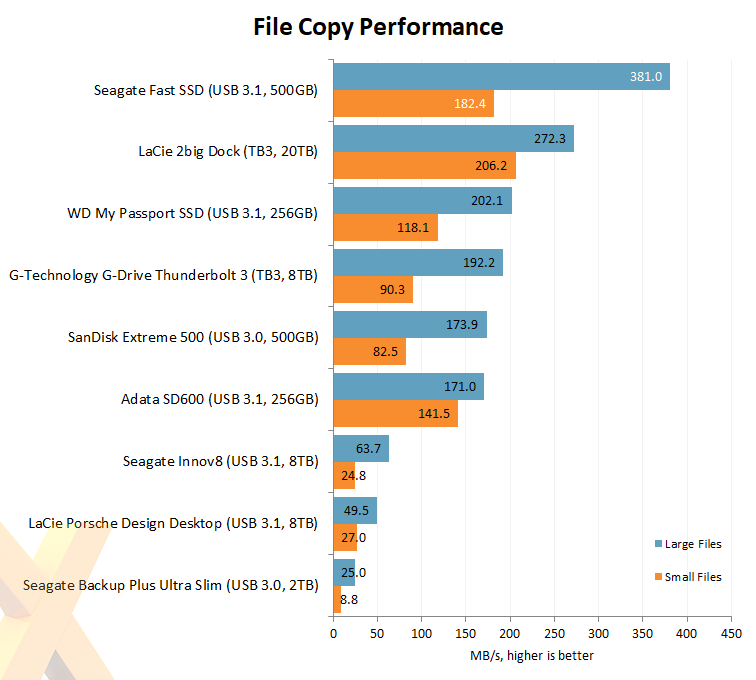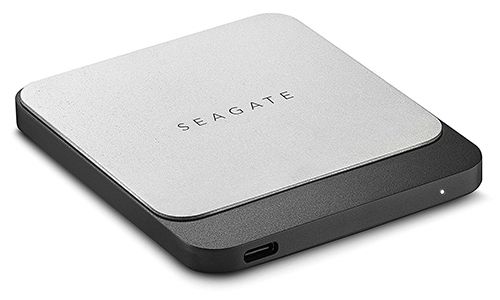Conclusion

Manufacturers tend to favour sequential throughput benchmarks, but real-world performance can vary depending on the type of data being moved to and fro. Our second test sheds light on two potential workloads; copying across a folder containing large files such as ISOs; and copying across a program folder full of various small files. Seagate's solid-state portable is once again one of the best performers on show.
Summary
...the only consideration for would-be buyers is whether the advantages of solid-state technology warrant the premium.The Seagate Fast SSD is one of the best portable drives on the market today. Available in capacities of up to 2TB, the sleek-looking device is small, light and capable of speeds in excess of 500MB/s when connected via forward-looking USB Type-C.
Creating a capable external SSD shouldn't be difficult, but Seagate has dotted the i's and crossed the t's. Outside of extreme ruggedness, Fast SSD offers just about everything we'd want from a portable drive, and the only consideration for would-be buyers is whether the advantages of solid-state technology warrant the premium. Hard disks remain the more affordable option, but once you've tasted the speed, silence and resilience of an SSD, there's no going back.
Bottom line: in the market for a sleek, quick and spacious portable drive? Seagate's Fast SSD ticks all of all those boxes.
Sleek and silent SSD form factor
USB Type-C and Type-A cabling
Three-year warranty as standard
Seagate Fast SSD
HEXUS.where2buy*
The Seagate Fast SSD is available to purchase from Amazon.
HEXUS.right2reply
At HEXUS, we invite the companies whose products we test to comment on our articles. If any company representatives for the products reviewed choose to respond, we'll publish their commentary here verbatim.
*UK-based HEXUS community members are eligible for free delivery and priority customer service through the SCAN.care@HEXUS forum.















